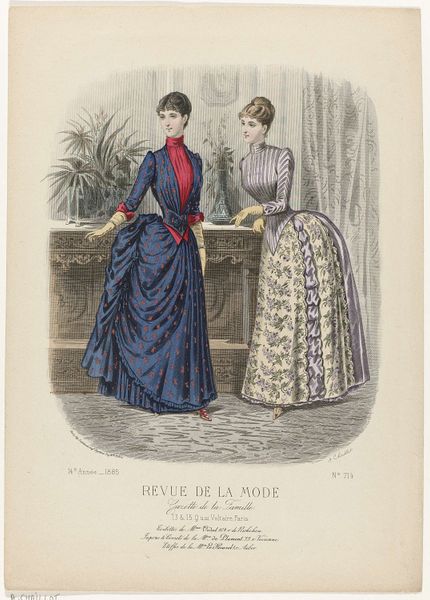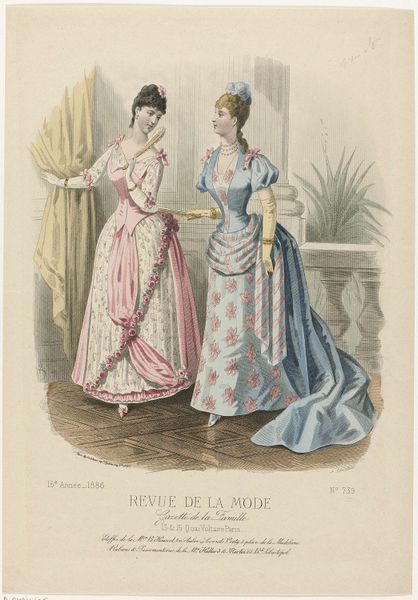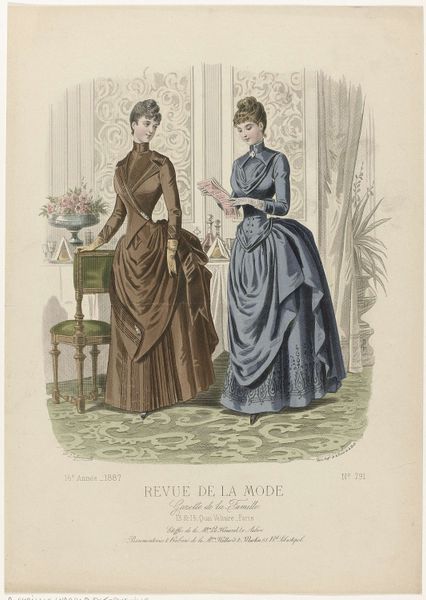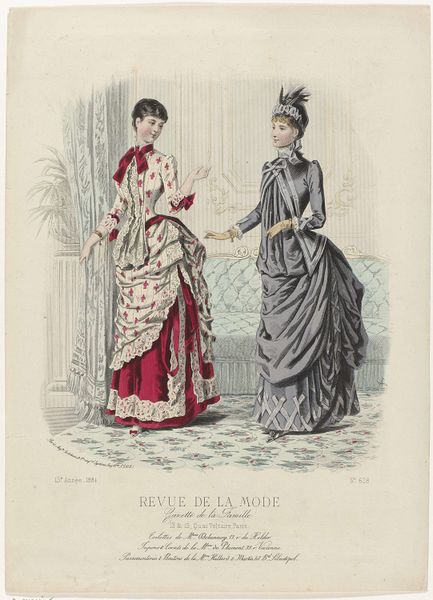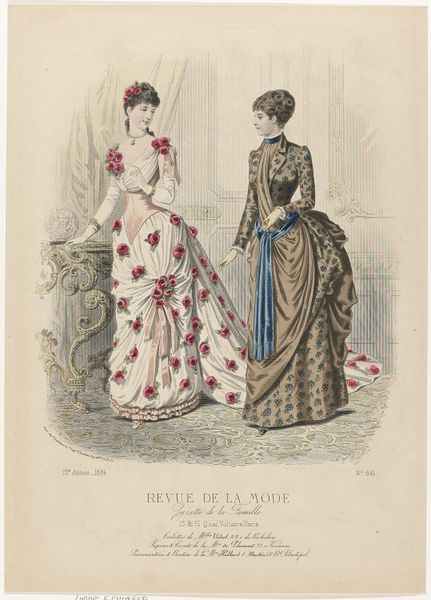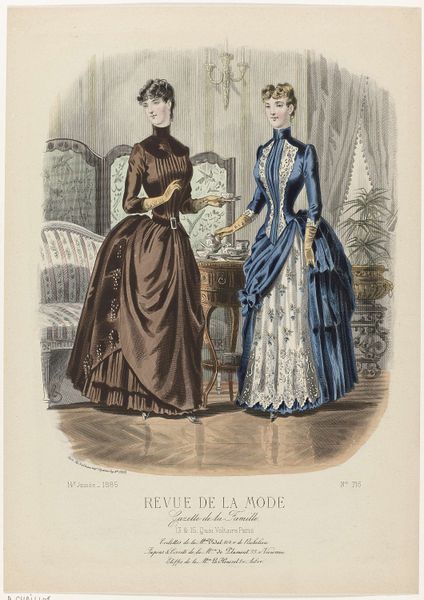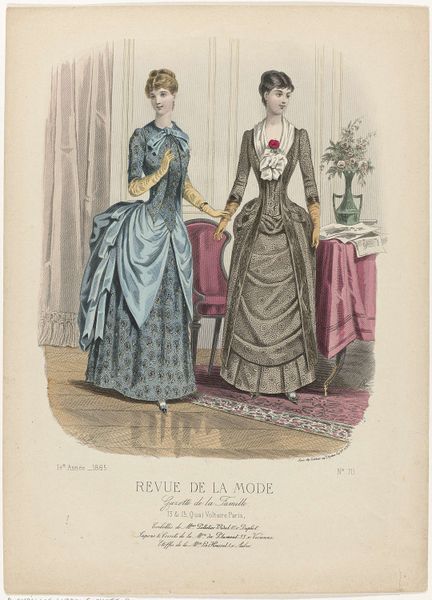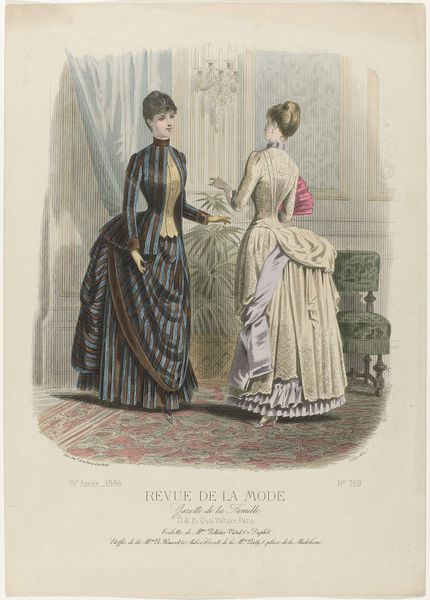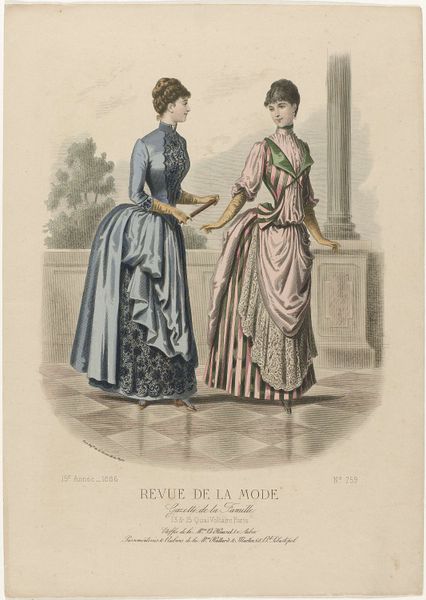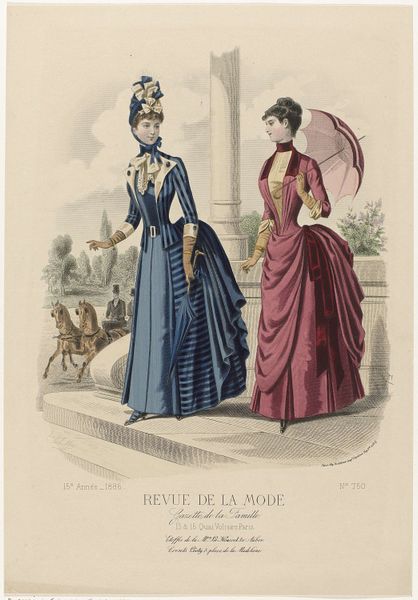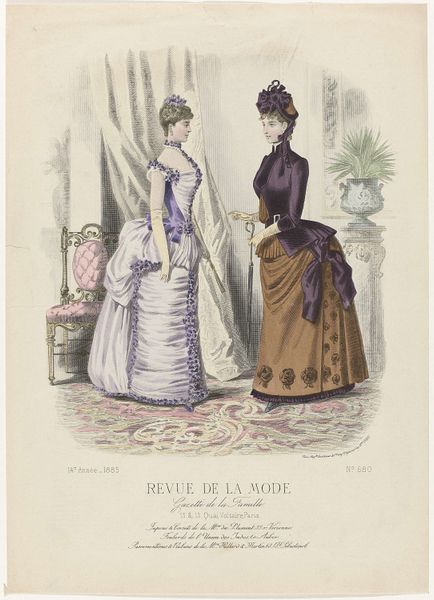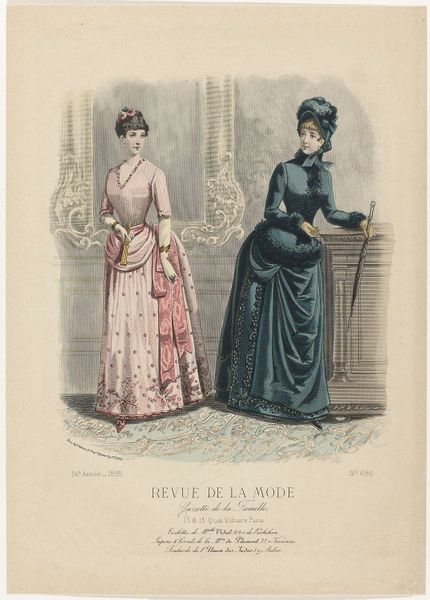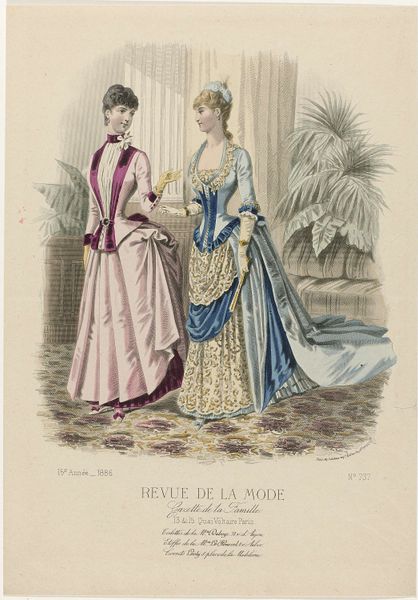
Revue de la Mode, Gazette de la Famille, dimanche 21 novembre 1886, 15e Année, No. 777: Toilettes de M.me Pelletier-Vidal (...) 1886
0:00
0:00
Dimensions: height 375 mm, width 268 mm
Copyright: Rijks Museum: Open Domain
Curator: I find this 1886 print titled "Revue de la Mode, Gazette de la Famille" to be utterly captivating in its draftsmanship. Note the precision of line and wash used to convey the textiles. Editor: Immediately striking are these constricted silhouettes, aren't they? Encapsulating and rigid, yet parading around wealth and leisure. It certainly evokes the stifling expectations placed on women during the late 19th century. Curator: Indeed. The composition itself draws the eye across the contrasting, yet balanced, color palettes and then upwards to appreciate the meticulously detailed hair arrangements. Notice, if you will, how the arrangement subtly directs our gaze? Editor: Precisely! It's like a coded language of status and conformity being presented in a drawing advertised to the family, isn't it? The domestic sphere becomes a stage for this performance. The puffed fabric creates a prison that traps her into expectations that the patriarchal society demands. Curator: The artist, A. Chaillot, uses watercolor to great effect here. The shimmering qualities achieved create depth that belies the drawing’s flatness. I would also point to the impeccable rendering of depth within the indoor domestic space as the perspective creates dimension that the flatness denies. Editor: I agree, though that very flatness only accentuates how the women are being turned into decorative objects themselves, becoming indistinguishable from the ornamental interior. What power dynamics are being internalized and commodified here? This image gives those social cues in this exact place at this moment. Curator: An interesting perspective to consider, for sure. Ultimately, Chaillot gives us the line and balance that illustrates fashion that is, quite simply, superb. Editor: Agreed. This "Revue de la Mode" gives insight into societal pressures masked as pretty dresses, inviting critical questions about women’s representation even within fashion. It offers, to me, far more than simply pretty faces or fashionable adornments.
Comments
No comments
Be the first to comment and join the conversation on the ultimate creative platform.
